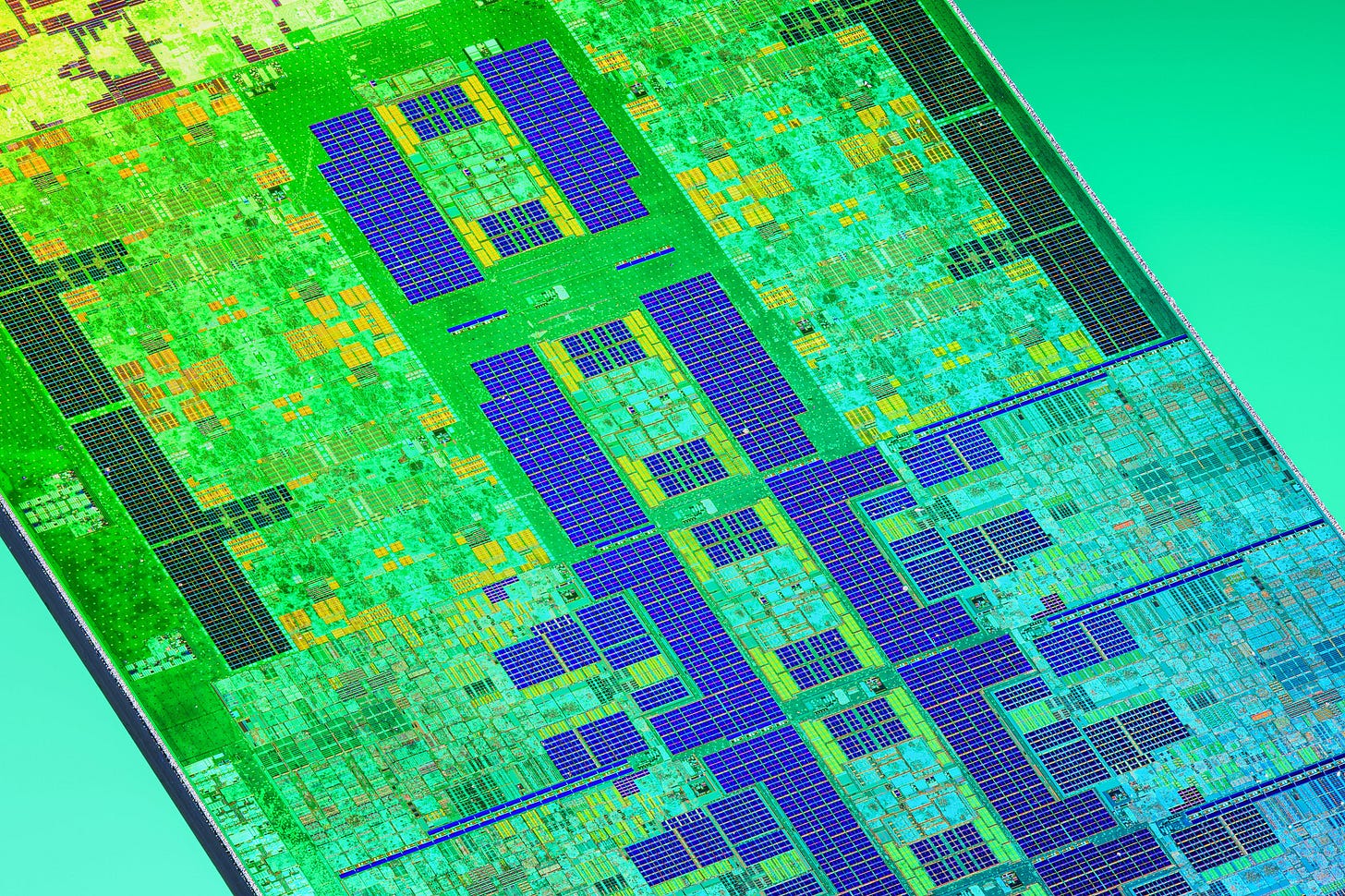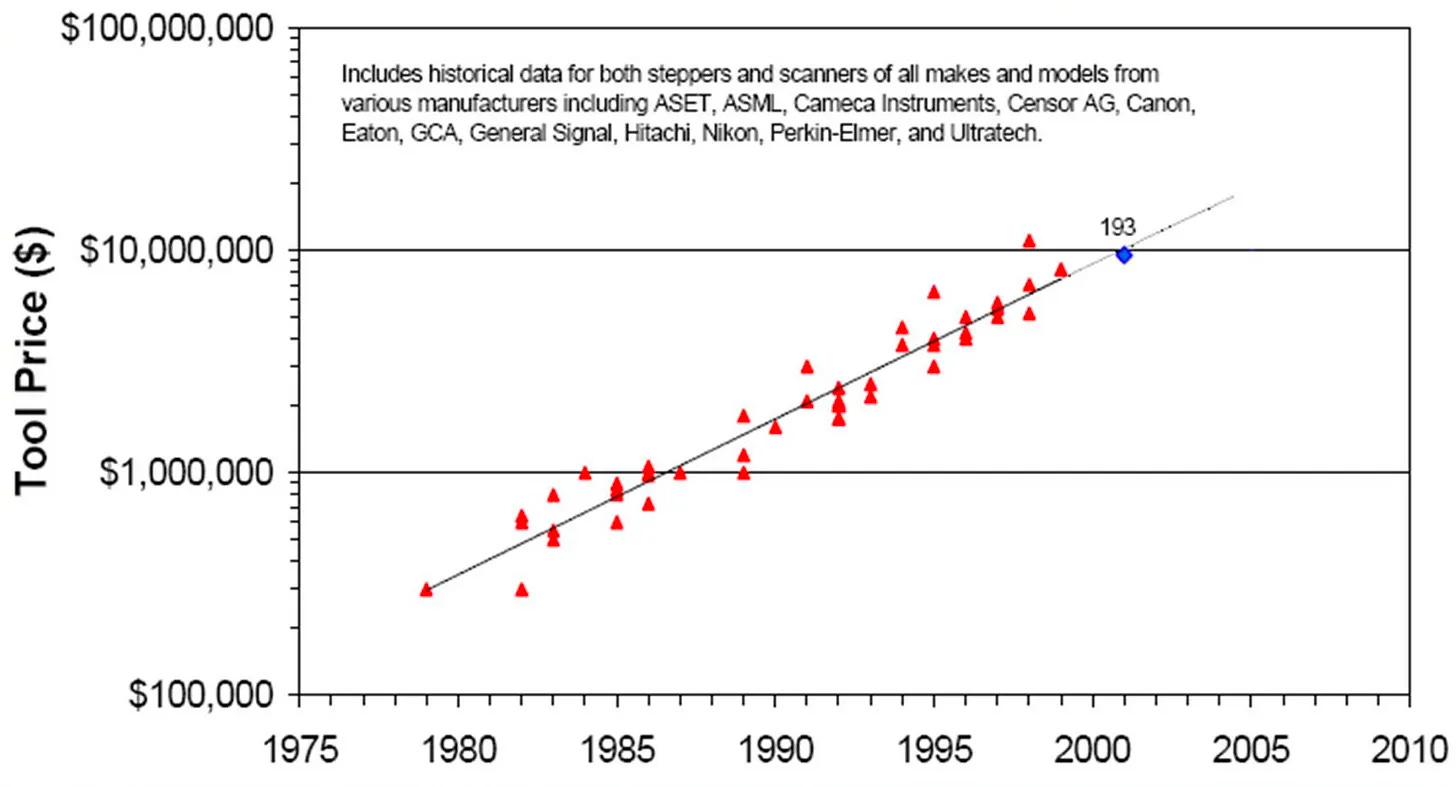Chip Letter Links No. 17: Raptor Lake, Fake Chips, China's Chipmakers, Linux in the Browser, Stepper Prices, Cray and more
Great links, images and reading for 7 May 2023
Hi everyone and thanks for subscribing. This is one of a regular series of posts with links, images and articles of interest, inspired by Adam Tooze’s excellent Chartbook.
Each edition starts with a beautiful die image. This week it’s an Intel Raptor Lake CPU courtesy of Fritzchens Fritz.
Welcome and Special Offer
A warm welcome to the 400+ subscribers who have joined over the last week. As a brief introduction: The Chip Letter looks to answer the question ‘How did we get here?’ in tech, mostly (but not exclusively) focused on semiconductors. We want to understand why certain technologies and companies won, why others lost and what we can learn from that.
Posts over the last few months have looked at the founding of ASML, the origins of the x86 architecture and RISC, the Story of Arm and looked at Gordon Moore the risk taker. Coming in the next few weeks we have posts on:
The origins of neural networks and AI and how early work on AI influenced all the computers we use today.
Apple’s very first attempt to build its own microprocessor.
Why the industry’s giants failed to make an enduring RISC processor architecture.
How a niche programming language from Sweden was key to the largest acquisition of a venture capital backed company in history.
We also have regular links posts like this, with eclectic collections of links to topical, fun and thought provoking articles and videos.
Paid subscribers get extra posts, bonus content and links.
The Chip Letter is 100% reader supported, so if you’d like to support us and get full access, then please consider taking out a paid subscription.
To celebrate reaching over 4,000 subscribers, take out an annual subscription over the next 24 hours and get an extra 20% discount over the normal price.
Huge thanks to everyone who has taken out a paid subscription already!
Google "We Have No Moat, And Neither Does OpenAI"
I know that many new subscribers will have joined after reading the recent post from
at but if you haven't then you should! It's an important and thought provoking post.The post has also spurred a remarkable debate on Hacker News with over 1,000 comments.
And a huge thank you to Dylan for featuring The Chip Letter in his recommendations.
Asianometry on Fake Chips
All Asianometry episodes are great, but this, on fake chips, is particularly interesting.
It poses some interesting questions. If you put electronics in a device (aircraft for example) that is expected to last for 30 years how do you ensure that there is an adequate supply of replacement parts when the originals fail?
Link to YouTube below and Substack:
Running on Ice : China’s Chipmakers
Interesting report from the Rhodium Group on China’s Chipmakers. From the introduction:
This note takes a closer look at which semiconductor segments still lie beyond the reach of US regulators and where Chinese chipmakers and state backers may focus their resources. We also assess how China’s expanding market share in these mature technology segments could trigger regulatory actions by the US aimed at steering supply chains away from China.
Livebook Launch Week
If you’re interested in Machine Learning then José Valim’s Livebook is worth a look.
Bringing the tried and tested (and resilient) technology behind Erlang and Elixir to the world of ML, Livebook provides a Jupyter Notebook like experience and tools for ML and data exploration.
Definitely niche, at the moment, but this ecosystem is interesting and Erlang powers some remarkable services.
Listen to José's appearance on the Changelog podcast and watch him demonstrate Livebook’s in use as part of the recent ‘launch week’.
‘Moore’s Law’ for Stepper and Scanner Prices
We know that leading-edge lithography equipment has become eye-waveringly expensive, and it’s interesting to see that the course of stepper prices follow an exponential curve over time. This chart is from a Sematech document showing the course of stepper prices over two decades leading up to the start of the millennium.
PowerBook Cray Front Panel
Apple and Cray, the supercomputer maker, have long been connected. Apple bought a Cray supercomputer to help design the Mac, and Seymour Cray used Macs to help design Crays. The Cray T3D was a hugely innovative machine and continued that history. From Wikipedia:
Cray Research's first-generation massively parallel supercomputer architecture, launched in 1993. The T3D is a scalable distributed NUMA architecture containing up to 2048 processing element (PE) nodes of 150 MHz DEC Alpha 21064 processor with either 16 or 64 MiB of DRAM interconnected as a 3D torus, so that each processor can access the memory of every other processor.
The T3D also came with an Apple PowerBook Laptop. Its role? It was attached behind the front panel to display the Cray Logo (and do nothing else)! It’s (turned off) in the middle of the diamond below.
Pico Cray
On the subject of Cray we have PICO Cray, a cluster of Raspberry PI Picos built to resemble a Cray 1. Not quite as powerful (or as expensive) though.
If you’ve enjoyed The Chip Letter then please share with your friends and on your favourite online platforms!
After the paywall we’ve got links to tools to run Linux, DOS and Windows in the browser and a great post on writing a RISC-V emulator.








